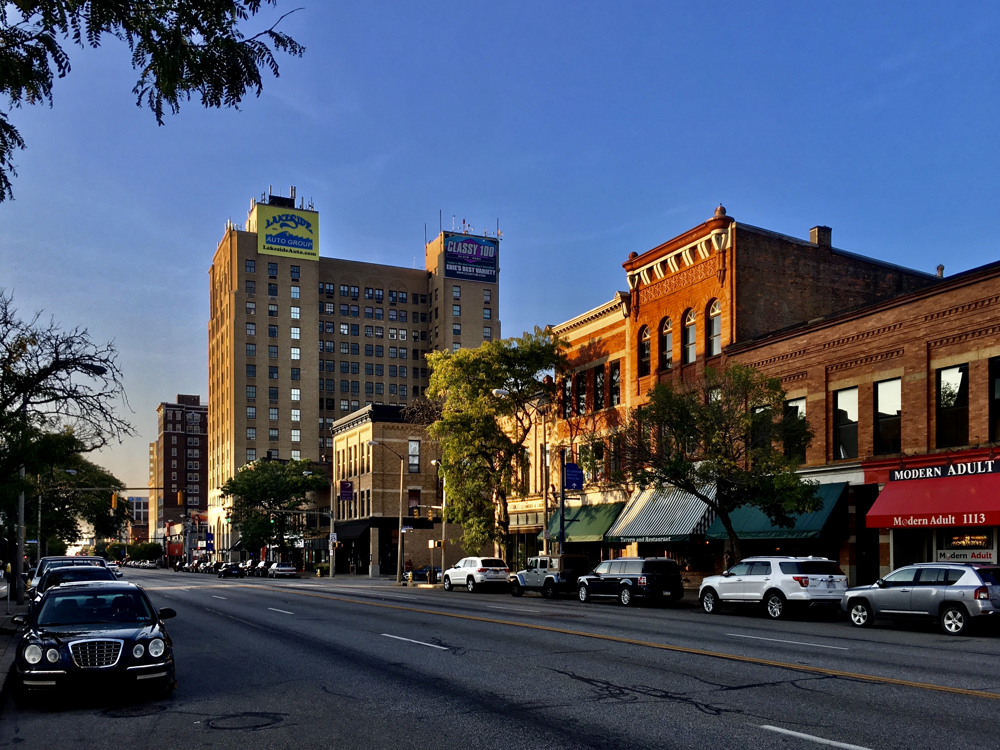Erie’s In-Between Cultural Identity
Erie, Pennsylvania is uniquely situated at a crossroads between the American Midwest and Northeast. Locals often describe the city as a “gateway to the Midwest” that also introduces elements of the Northeast. This in-between geography contributes to a cultural blend: Erie isn’t quite fully Midwestern nor entirely Northeastern – it exists in its own little bubble with traits of both regions. Some refer to Erie as part of the “Rust Belt,” noting that its economic decline came later than other industrial cities and may take longer to recover. Overall, Erie’s location has given it a hybrid identity and a small-city feel that is distinct from larger neighboring cities.

A Distinctly Insular Social Atmosphere
Many firsthand accounts characterize Erie’s social scene as tight-knit to the point of insularity. Newcomers often feel like outsiders breaking into pre-formed circles. One transplant recalled that Erie's bars and hangouts felt “insular” – bartenders would literally ignore new faces to serve regulars they knew from high school. Erie has been called a “high school town” where social connections trace back to long-standing local networks. In casual conversation, locals might quickly ask “What high school did you go to?”, a question that can baffle newcomers who have never encountered such hometown-centric curiosity. Because almost everyone seems to know everyone (or knows someone in common), Erie has been described as “the largest small town” – a quality that can be comforting to natives but disconcerting to transplants unaccustomed to such close social overlap.
This insularity can translate into a social environment that newcomers sometimes perceive as cold or unwelcoming. Erieites themselves insist they are not overtly rude, but even they admit that locals form a “very insular group” not always interested in meeting new people. An outside observer noted that the city “isn't used to outsiders at all,” finding this reluctance toward newcomers to be quite strange. In Erie’s social fabric, many people have lived their entire lives there and have deep roots – so breaking into social circles can be challenging for someone without those lifelong ties. Longtime residents may not even realize how tight their circles appear until an “outsider” points it out.
Economic and Historical Roots of Stagnation
Erie’s social insularity is often intertwined with its economic and historical context. The city has faced economic stagnation and hardship for decades, which contributes to a cautious, change-resistant mindset. Erie is one of the poorest urban areas in the nation – as of recent data, the city’s 16501 ZIP code was the fourth poorest in the entire United States. The median household income in Erie is only around $37,000, barely half the national average. Such pervasive poverty and slow job growth (exacerbated by deindustrialization and the pandemic) have led to a “shrinking population” as many younger or more ambitious residents leave in search of opportunity. In just the 2010s, Erie’s population dropped by over 6%, falling below 100,000 people. This brain drain means those who remain are often those deeply entrenched or with fewer options to leave, reinforcing a cycle of close-knit familiarity and skepticism of change.
Historically, Erie earned a reputation for resisting outside influence. A famous example is the Erie Railroad War of the 1850s, when locals violently opposed standardizing railway gauges that would have streamlined travel through the city. Riots broke out as Erie citizens tore up railroad tracks to block change, and outsiders grew to resent Erie for how it behaved in the face of progress. The incident was so notorious that newspaper editor Horace Greeley wrote, “Let Erie be avoided by all travelers until grass shall grow in her streets”. This proud, defiant streak – essentially an “island unto itself” mentality – can still be felt today. Even Pennsylvania’s governor noted that Erie has long been disconnected from the rest of the state’s developments.
Economically, years of industrial decline have bred a sense of missed opportunity and local frustration. Lifelong residents have watched potential investments slip away and government projects falter. This has fostered some “unearned cynicism,” as one Erie native put it, where people doubt that new initiatives will ever pan out. Longtime Erieites who have struggled through decades of layoffs and factory closures might be wary of outsiders coming in with new ideas or higher incomes. In some cases, there is resentment toward transplants, especially if they appear more affluent. One local observed that higher-income newcomers have options and luxuries many natives lack – their needs get catered to, fueling bitterness among residents who have worked for change for years only to see newcomers get attention. This economic gap can harden social divisions, making Erie’s social scene feel even more closed to those who “aren’t from around here.”

Do Outliers Thrive or Feel Isolated?
Given this backdrop, how does Erie’s culture treat outliers – those who don’t fit the local mold? The answer is double-edged. On one hand, Erie’s close-knit culture can indeed isolate people who are different. Creative thinkers, ambitious young professionals, or anyone deviating from the norm might struggle to find like-minded peers or support. For decades, the common pattern for such individuals was to leave Erie (the classic “brain drain”) in order to thrive elsewhere. As one long-term observer quipped, Erie’s unofficial rule was “never say anything bad about Erie” – expressing dissent or pushing for change could get you labeled a traitor to local pride. This mentality might stifle outliers who want to challenge the status quo. The cliquish power structure that one native decried (before he left town) shows that those who don’t conform may feel held back by an “old guard” in politics, business, and social life.
On the other hand, Erie’s very insularity can create pockets of opportunity for outliers to carve their own niche. Because the city isn’t a major cosmopolitan hub, someone with unique talents or ideas might actually stand out more. Erie is large enough to have diverse sub-communities – including a surprisingly multicultural mix of immigrants and refugees adding new energy to the city – yet small enough that a determined individual can get noticed. Some outsiders report that once you earn a place in a local circle, Erieites can be extremely loyal and supportive. For example, a newcomer who joined a local rec league and became a regular at a neighborhood pub found a tight group of friends and even met his future wife there. His outsider crew started as “arrogant twenty-somethings” feeling alienated and ended up finding a sense of belonging at a beloved dive bar – an experience that transformed them and rooted them in the community. Stories like this suggest that Erie’s environment, while initially standoffish, can be won over and even provide a fertile ground for personal growth once an outlier finds their footing.
Impact on Personal Identity and Belonging
Living as an outlier in Erie means constantly negotiating between alienation and identity formation. Many who grow up feeling “different” in Erie describe a period of seeing “only this city’s weaknesses” and the “limitations it was unjustly placing” on them. They might internalize the feeling of being an outsider, which can breed frustration or drive an intense desire to escape “boring” Erie for a place that’s more accepting or stimulating. This can shape one’s personal identity as someone who “doesn’t belong” or who is hungry for change. Some eventually do leave to find environments that match their ambitions or personalities. Those who stay often do so by making peace with Erie’s quirks – or by actively working to change the local culture.
Interestingly, Erie’s environment can also spur personal growth in unexpected ways. The lack of an easy social scene may push outliers to self-reflect and define themselves on their own terms, rather than blending into a crowd. Finding even a small community or project in which to invest oneself (an art scene, a startup, a volunteer initiative) can be incredibly meaningful in a place like Erie, where any effort stands out more due to the smaller scale. Outliers who remain often become bridge-builders: they may leverage their outsider perspective to introduce new ideas while still embracing Erie’s sense of community. Some eventually report a sense of pride in “making it” in Erie – turning that initial alienation into a kind of badge of honor. As Richard Boler, an Erie native, reflected after years away: the city’s “blemishes still exist… in spades”, but there are unique merits in Erie’s character that can surprise you. For those willing to look, Erie offers subtle charms – whether it’s the ease of striking up a conversation at a local festival, or the simple pleasure of an evening out that won’t break the bank, the way it might in a bigger city.
Ultimately, Erie can both worsen social disconnection and provide space for growth, depending on the individual. The city’s insularity and stagnation can indeed amplify feelings of loneliness or being “out of place” – an outlier has to work harder to find their tribe. Yet, for some, Erie’s very peculiarity becomes a crucible for personal development. They learn to navigate a challenging social landscape, and in doing so, gain a stronger sense of self. In a town where belonging isn’t handed to you, those who manage to create their own sense of belonging often form extraordinarily tight bonds and a clear personal identity. In that sense, being an outlier in Erie can either be an isolating experience or an unusual path to resilience and self-discovery – or, quite often, a bit of both.

